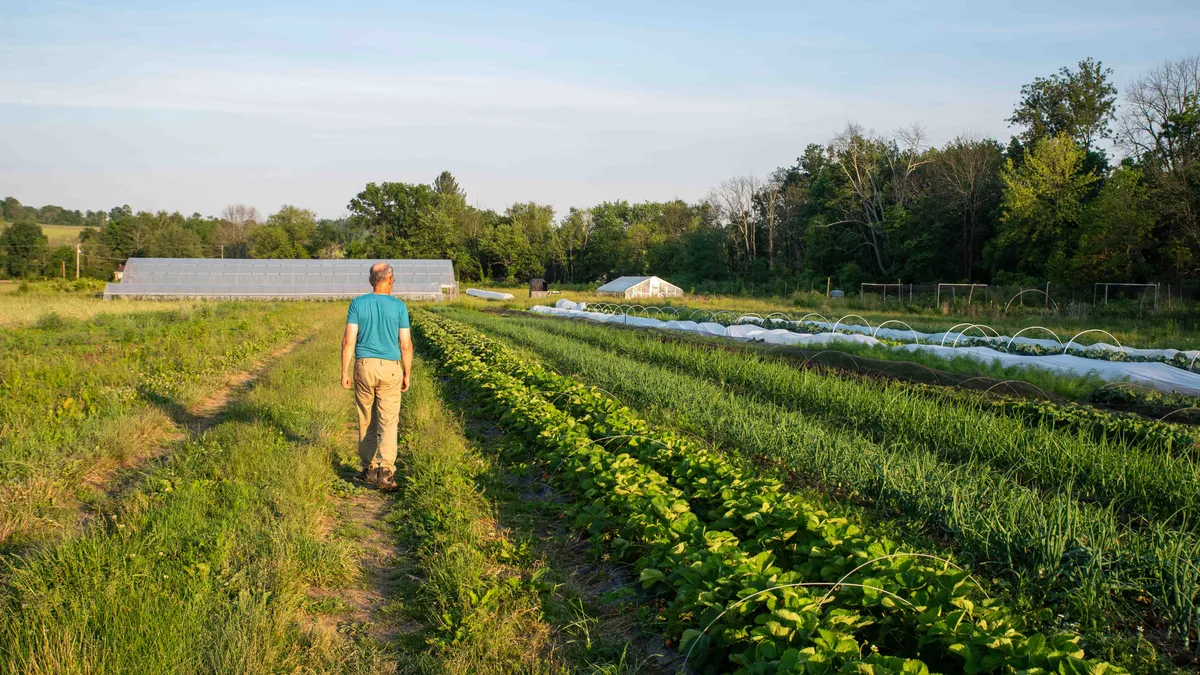COP29, the United Nations annual climate summit, concluded Nov. 24, two days after it was originally scheduled to end and two weeks after over 55,000 global delegates and climate negotiators descended onto Baku, Azerbaijan, with the hope of reaching a deal to accelerate climate action.
The final deal was announced in the early hours of Sunday, a few hours after climate negotiators committed to fully operationalize the Loss and Damage Fund, and offered developing nations $300 billion in climate financing annually by 2035. The topline figure was met with much criticism from developing countries and environmental groups, but this was not the only agreement reached at the conference.
Here is a look at the top takeaways from the annual climate summit.
Summit’s $300 billion climate finance offer slammed by critics
The final COP29 finance deal included an agreement by wealthy nations to help developing nations deal with the adverse impacts of climate change. To do so, those nations will offer financial aid worth “at least” $300 billion per year. The figure is a step up from the $250 billion that was initially proposed during negotiations and expands on a previous commitment made by wealthier nations at COP15 to funnel $100 billion annually to climate-imperiled nations by 2020. Wealthier nations reached that financial goal two years late, in 2022.
However, it was lambasted by environmental groups and vulnerable nations alike. Indian delegation representative Chandni Raina said the deal would not help “address the enormity of the challenge” being faced by vulnerable nations.
“$300 billion does not address the needs and priorities of developing countries,” Raina said during the summit’s closing session on Sunday. “I regret to say that this document is nothing more than an optical illusion.” The World Wildlife Fund echoed this sentiment and called the finance deal a “setback for climate action.”
The $300 billion pledge also stands in stark contrast to the estimated price tag of meeting climate and development goals. Experts said meeting those development and mitigation goals will require as high as $1 trillion a year.
Global carbon market receives a boost
Despite the heavily criticized ending, COP29 opened strong with climate negotiators approving Article 6.4 of the Paris Agreement on the first day of the summit.
Article 6.4 — also known as the Paris Agreement Crediting Mechanism — identifies and supports verifiable emission reduction projects and helps draw funding needed to implement them. The mechanism also encourages cooperation among countries and companies who are interested in utilizing such projects to reduce their carbon footprint, according to the global climate accord.
The United Nations Climate Change Executive Secretary Simon Stiell said the Nov. 11 decision was the culmination of over 10 years of work and backs “strong standards for a centralized carbon market.” Once operational, Stiell said the market would help countries implement their climate plans in a “faster and cheaper” manner and reduce emissions.
Article 6.2 was greenlit by climate negotiators at the summit shortly after. This portion of the climate treaty allows different actors, like countries and private sector companies, to exchange emission reductions and removals through bilateral agreements.
Both frameworks fall under Article 6 — a guide for how countries can collaborate to achieve their climate targets — which was adopted at COP29 on Saturday. The article was originally approved at COP26 in Glasgow, Scotland, and was designed to boost international cooperation and sustainable development, as well as help unlock financial support for developing countries, per the 2021 update to the agreement.
Loss and Damage Fund fully operationalized
A fund that seeks to help developing countries that are particularly vulnerable to climate change respond to economic and non-economic losses and damages was also approved after the conference’s initial end date and made fully operational on Saturday.
The Loss and Damage Fund, originally established at COP27 in Egypt, will begin financing projects and distributing funds starting in early 2025. The fund has received financial commitments upwards of $730 million so far, according to a release announcing the agreement.
Earlier this year, COP29 president-designate Mukhtar Babayev said operationalizing the fund was among the top priorities in his climate action themes and goals for the summit. At the time, Babyev said greenlighting the fund would allow it to begin distributing the “much needed and long-awaited funds” as soon as possible.
The World Economic Forum has pushed for the fund to prioritize countries whose agriculture sectors have been devastated by climate change.
“Agriculture can serve as the backbone of more climate-resilient rural economies and catalyze growth in adjacent sectors, such as transportation, processing and retail, thereby creating broader economic stability and development,” the WEF said.
‘Continuity’ coalitions created for agriculture, other sectors
COP29 also marked the launch of several “continuity coalitions” bringing together international organizations and previous COP presidencies to address climate pledges in individual sectors including agriculture and healthcare.
The farming coalition, called the Baku Harmoniya Climate Initiative for Farmers, will be led by the Food and Agriculture Organization of the United Nations. The initiative aggregates more than 90 global or regional initiatives, networks and partnerships to ensure these projects are aligned to deliver the greatest impact.
Kaveh Zahedi, Director of FAO’s Office of Climate Change, Biodiversity and Environment, said the initiative is “an unparalleled opportunity to collectively drive climate solutions through agrifood systems.”
Sarah Zimmerman contributed to this story.




















